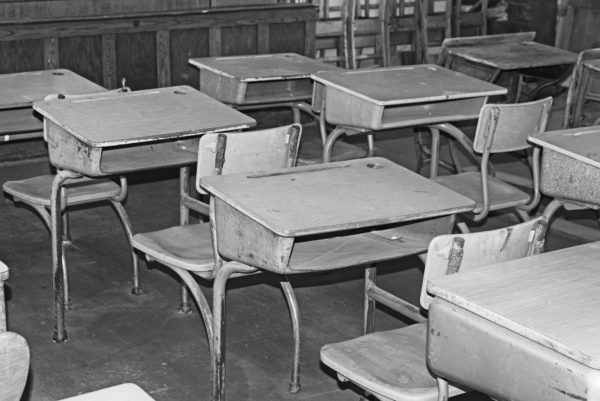As schools depart from traditional instructional methods and environments, some education leaders are discovering how a combination of blended learning and reimagined physical learning spaces can lead to better student engagement and achievement.
Redesigning physical learning spaces can lead to brain-friendly learning and encourage students to become more engaged.
And when learning spaces are flexible, they provide more modern learning experiences and meet various needs, such as small-group collaboration, large-group instruction, and individual study or review.
A new whitepaper from Evergreen Education Group and Fuel Education explores how three schools’ blended learning programs have redesigned their learning spaces to encourage student and teacher success.
Next page: How each school uses learning space to its advantage
Researchers found three common characteristics among all the schools’ programs:
• The leaders and teachers at these schools are not afraid to rethink what school should look like and what practices will work best for their students.
• The three schools use online curriculum, which frees teachers from being the main source of instruction and allows them to try more alternative teaching methods like team teaching, block scheduling, personalized learning, project-based learning and more.
• Each of the schools embraces the change and realizes it is a process. By adopting a growth mindset, which they hope students will also adopt, the schools and their leadership were able to overcome any initial issues and are now reaping the rewards of blended learning.
Poudre School District Global Academy focused on creative use of the school day schedule, and made face-to-face interactions with teachers and students a mandatory part of the school year after data revealed that students who had such interactions performed better in online courses. High school, middle school and elementary school students alternate on-campus days along with at-home days. The school reported it outperformed the average PARCC end-of-year assessment scores in math and English Language Arts in almost every grade level, and the elementary and middle school students surpassed the average typical growth in math and reading on the 2015 NWEA Measure of Academic Progress Assessments.
“I really think that what we’re doing here is the best of both worlds,” said Cheryl Fenlason, the interim principal of Poudre School District Global Academy. “It’s an opportunity for students to be independent and develop some of those life skills they’ll need for success after high school.”
Fenlason said teachers are more enthusiastic and have time to prepare, use data in their instruction, and be intentional about their plans and collaboration.
Springs Studio for Academic Excellence is featured for creative use of space and its combination of online, blended and project-based learning. The school purchased a single-story warehouse building and turned it into a modular setting teachers and students can easily reconfigure for large- and small-group needs, along with an art studio, science labs, and areas for independent study. More than 80 percent of students re-enroll for the next year, and almost every grade level has outperformed state averages in English Language Arts, according to the school.
“When you’re comfortable, there’s something to be said for that,” said Jodi Fletcher, Springs Studio for Academic Excellence principal. “The environment does lend itself really well to kids wanting to succeed. It lends itself to building relationships, and that’s what is innovative, relevant and personalized. We’re building relationships with students who are here for a reason.”
Bend-La Pine Schools’ Summit High School is featured for its transformation from a traditional school into an innovative blended learning program by implementing small, but impactful changes. Educators are encouraged to reconfigure their spaces to offer areas for larger flex labs and smaller spaces for small group instruction. Students have the choice of working on in-class instruction or using online courses, which has improved students’ interest in the topic being covered and given them time management skills they may not have gained otherwise.
“A couple of years ago, we wondered if all students needed to be in all classrooms all of the time. We said no, so in our comprehensive school, what could that look like?” said Dr. Alice DeWittie, Summit High School principal. “We turned it over to the teachers. If they have an instructional reason for kids not to be in the classroom, they should go for it. It’s based on teacher instructional needs.”
“Teachers are entirely empowered to use space and time in any way that serves them instructionally,” DeWittie said. “As long as they can instructionally defend it, then I’m all in and I can defend it.”
- Friday 5: Virtual field trips - April 26, 2024
- Google, MIT RAISE launch no-cost AI training course for teachers - April 26, 2024
- 4 ways to support work-based learning - April 23, 2024

